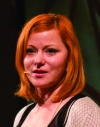 |
Dr. Petra JenusJožef Stefan InstitutePressure-less Spark Plasma Sintering Of Ferrite-based Permanent Magnets: Phase Evolution, Microstructure And Magnetic Properties Schultz International Symposium (8th Intl. Symp. on Science of Intelligent & Sustainable Advanced Ferromagnetic and Superconducting Magnets (SISAM)) Back to Plenary Lectures » |
Abstract:Permanent magnets (PM) are vital components of the green transition. However, the criticality of rare-earth elements (REE) [1] needed for their manufacture makes them of great strategic, geopolitical, and socio-economic importance, making it an urgent need to develop alternative REE-free magnets. The best-performing PMs are based on REEs, while lower-performance PMs use ferrites. [2] Due to the high performance of REE magnets, most modern devices employ them, as they are lighter and lead to better efficiency. Unfortunately, REEs are critical raw materials owing to their supply risk and price volatility, and also their harmful environmental impacts. [3,4] One of the main solutions focuses on improving the performance of alternative rare-earth-free or rare-earth-lean magnets co-designed with motors or generators for greater efficiency. This study focuses on a consolidation of ferrite-based permanent magnets by means of novel Pressure-less Spark Plasma Sintering Technique (PSPS). PSPS process uses the Joule heating effect to elevate the temperature in the heating die, which is transferred to the sample via thermal radiation. The method allows very high heating rates (up to 900 °/min) and short retention times in a matter of minutes. Thus, the grain growth is suppressed. The starting material for the study was recycled Sr-ferrite powder obtained from the injection bonded magnets’ production waste. Processing and consolidation parameters were tailored to achieve dense magnets. The phase composition, microstructural analysis and magnetic properties of starting powders and sintered magnets were evaluated. Acknowledgement: This research has received funding from the European Union’s Horizon 2020 Research and Innovation Programme under grant agreement No. 101003575 (ERA-MIN3, project GENIUS), and Slovenian national research agency (P2-0087, P2-0405, P2-0412). |
|